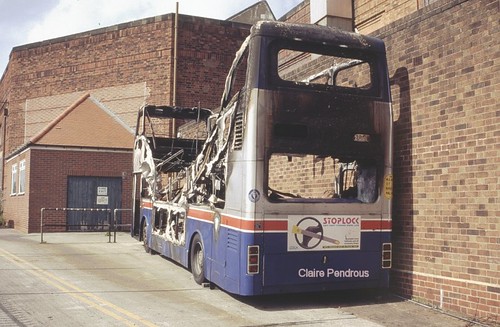2964 (WVP104A) started life with West Midlands PTE as 8104 in June 1984. This bus was one of a batch of MCW Metrobuses (8101-8114, A101WVP-A114WVP) allocated to Miller Street Garage that had been especially adapted by Metro Cammell Weymann to run along a 600 yard section of ‘Guided bus rail’ constructed on the 65 route at Short Heath in Birmingham.
Known as ‘Tracline-65’, the experimental guided-bus route was quite revolutionary at the time and is believed to have been instrumental in WMPTE’s/Centro’s eventual development of the Midland Metro. The experimental Tracline-65 proved that high capacity buses on mainline routes could run along reserved sections of narrow roadway, guided by rails thus avoiding traffic congestion, which was considered a big step forward in resurrecting trams in the west Midlands.
After the demise of Tracline-65, these ‘guided’ Metrobuses were demoted to normal bus work and received standard bus livery, receiving fleet numbers 2961-2974. However, the unique destination blind layout fitted to these vehicles would always give away their Tracline-65 origin.
Sadly, 2964 was destroyed in a fire at Hockley Garage in July 1994 and was subsequently sold for scrap. In accordance with WMT’s policy of that time, badly damaged buses were generally moved from garage to garage at night to minimise any adverse publicity. 2964 is pictured after being moved from Hockley to the rear of the former Tyburn Road Works, Birmingham and awaiting collection by Barnsley based scrap dealers, Wigley of Carlton, who bought the bus in November 1994 and broke her up. What a waste of money. Len.









